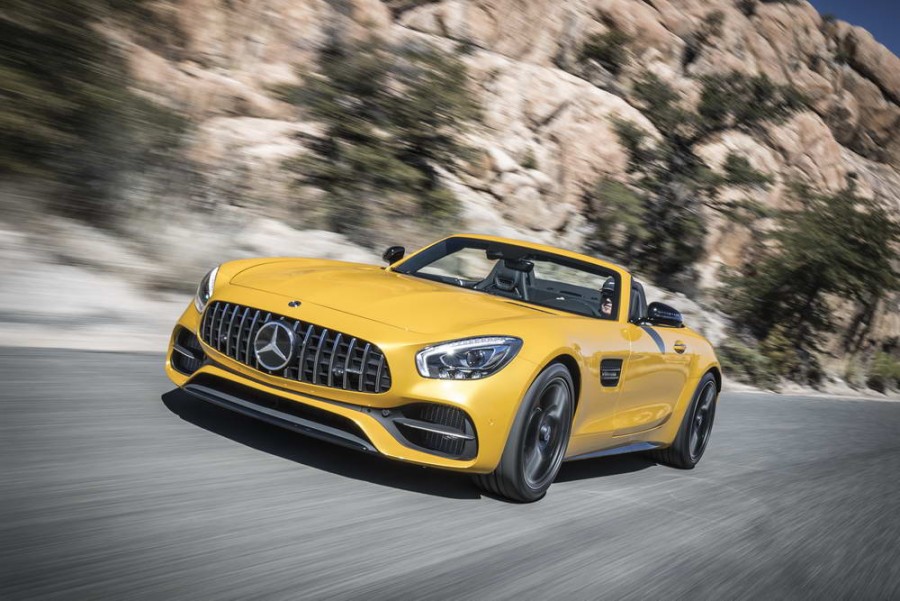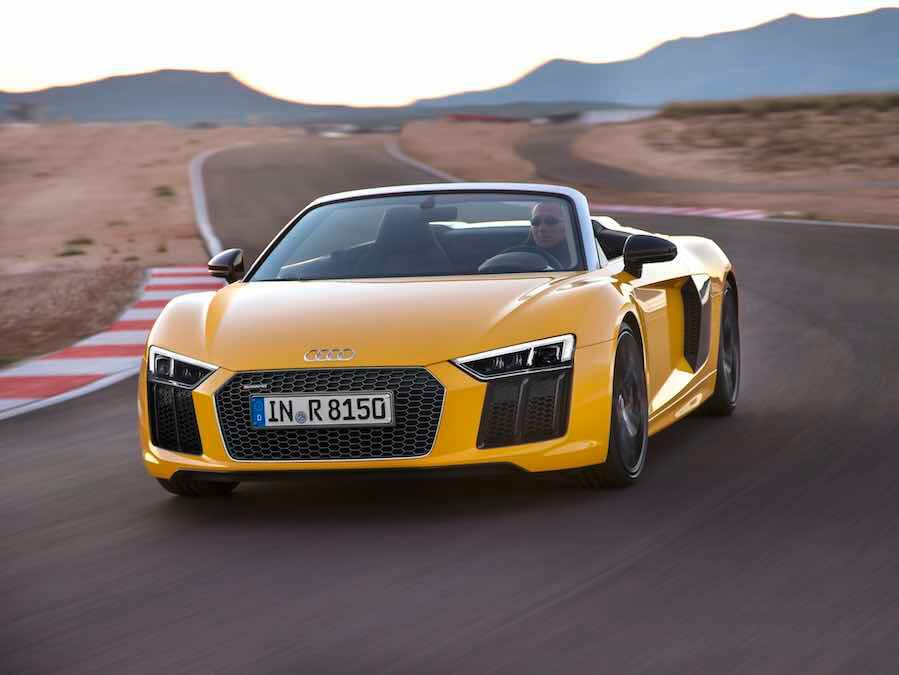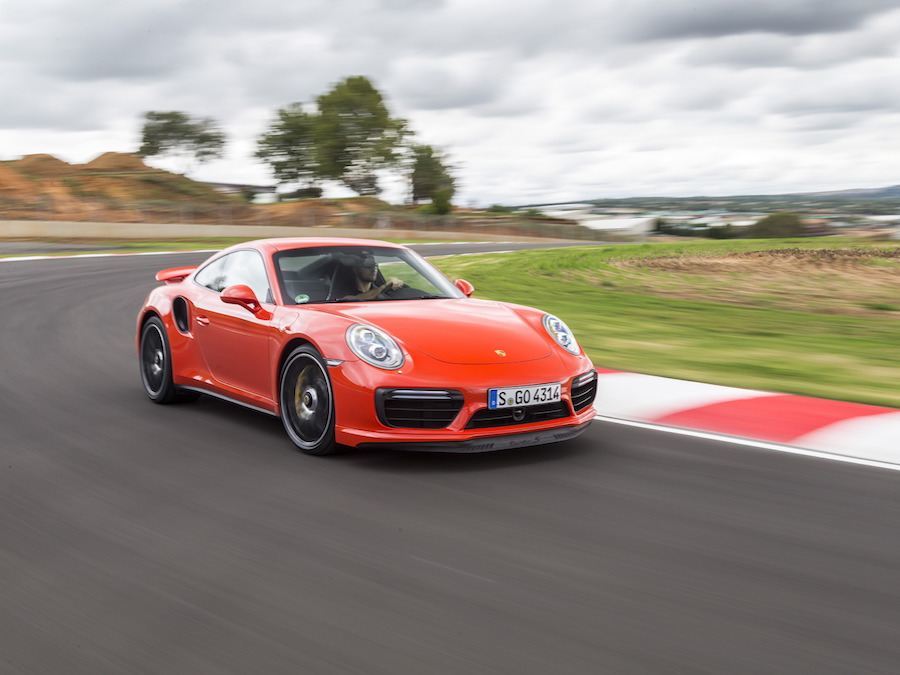What we've got here is not just a new open-topped Roadster version of the already quite accomplished Mercedes-AMG GT sports car, but also the expansion of the line-up to accommodate a new 'C' model (not that the German company can tell us what the C stands for - it sits between the GT S and GT R). So, clearly targeting the expansive Porsche 911 line-up, the would-be Mercedes-AMG GT buyer now has a lot of choice. The GT Coupe and new GT Roadster are both offered in standard GT, GT S and the new GT C grade tested here, while the hardcore GT R specification is solely available on the Coupe. Got all that?
In the metal
At the same time as the introduction of the GT C model and the new Roadster body style, the whole range receives a minor facelift to bring it into line with the GT R. The biggest and most obvious change is the adoption of the so-called Panamericana radiator grille with its 15 chrome-plated vertical slats. The bodywork below that has been redesigned too, making the GT appear wider and lower than ever. Look closely and you'll see the AirPanel active air management louvres, which open to allow more cooling air to the engine when needs be, but stay shut to reduce drag at all other times.
As standard, the GT C runs on 19-inch alloys up front and 20-inch rims at the back, the latter smeared in 305/30 R20 tyres, while the side sills are different to those of the regular GT Roadster's to help accommodate the wider back end. The GT C adopts the whole rear of the GT R (more on that below), which means that the GT C Roadster is 68mm wider than the standard car (including plastic arches). It looks sensational from any angle, roof up or down, subtly different to the GT Coupe, but no less desirable. The fabric roof folds away in about 11 seconds at speeds of up to 50km/h and can be had in black, beige or red for no additional cost.
That opens up a 'cosy' two-seat cabin, which can be finished in 10 different ways apparently. It's a classy interior with incredible quality and attention to detail (we love the almost-but-not-quite circular steering wheel and bespoke AMG switchgear on the wide centre console), but it's not what you'd call spacious. There's a dinky little wind deflector behind the seats, which themselves are either standard AMG sports chairs or the very lovely AMG 'performance' items that really hold you in place (but are not for those with big bones...). The Airscarf neck-heating system can be fitted to both and it's highly effective, while the seats can be kitted out with climate control, too. Even with the roof stowed you feel quite enclosed in the car thanks no doubt to the low-set seats. You feel a ruffle of wind on the move, but it's certainly not unbearable or hairstyle challenging at sane speeds.
Driving it
The doors open wide and you have to lower yourself down into the sports seats over a surprisingly high lip. Immediately it feels special as you're sat so low down. That does make it difficult to see the extremities of the car, but it also adds to the occasion. That continues as you look around the cabin, and though some of the switchgear is familiar, it's the bespoke AMG bits that really catch your eye. Close to hand is the tactile driving mode rotary selector, allowing Comfort, Sport, Sport+ and Individual settings by turning it, or the full-on Race mode by pushing the whole thing down. These tweak various things such as the power steering assistance, level of stability control, engine response, transmission calibration and the operation of the adaptive damping system, plus the AMG Performance exhaust system. You don't have to keep to the default settings, though, as separate buttons allow you to alter the damping through three levels, make the exhaust louder or quieter or tell the transmission you want to have full manual control.
Press the engine start button and the engine roars into life, but settles down into a quiet rumble - unless you have the exhaust in its sportier setting, in which case it blares aggressively, as if the car is impatiently waiting for you to get on with it. Pull the unusual stubby lever into D and off you go. In Comfort mode, it's noticeably smoother to drive at low speeds due to the softer throttle response, but it's still effortlessly fast. Put it into Race mode, put your foot down and it leaves you in no doubt that it could hit well over 300km/h. Full-bore standing starts are sensational when you use launch control, as well. The heart of this car is its twin-turbocharged 4.0-litre V8 engine up front. For the GT C it produces a rather serious 557hp and 680Nm of torque, and while those numbers and the performance resulting from them are all deeply impressive, it's the sounds this engine makes that define it, varying from subdued rumbles to a bass-rich V8 baritone to quick-lived snarls and even a high-rev cacophony when you use all the rev counter. There's nothing quite like it, especially when you have one of the sportier driving modes selected and the revs flare as the transmission goes down a gear.
The seven-speed auto is very well-judged, allowing comfortable cruising and everyday use at one end of the spectrum and fast, meaningful full-throttle changes at the other. It's pretty good left to its own devices, but there's huge enjoyment to be had from taking control for yourself - enhanced no end by the solidly metallic gearchange paddles fitted to the back of the steering wheel. That's attached to a fantastic electromechanical power steering system as well, which feels completely free of slack. The GT C gets the GT R's rear-wheel steering axle on a wider track, which allows AMG to fit a quicker steering rack up front (still a variable ratio item). Below 100km/h the rear wheels steer in the opposite direct to the fronts by one and a half degrees to aid agility, while they steer in the same direction above that speed in a bid for enhanced stability. The best thing about all this is that you don't feel it at work; the car just feels smooth and stable on the motorway at speed, yet is sensational on a tight and twisty mountain road with multiple direction changes.
Through all this, the body control is exceptional, even in the Comfort setting for the dampers. Admittedly, this is at the expense of ride comfort, and the combination of the firm settings and wide low profile tyres does make for a jarring, loud ride over badly surfaced roads. Nonetheless, it's an exhilarating car to drive, even when the surface underneath isn't perfect, and we came away enthralled with the fact that it feels razor sharp and responsive into a bend yet it never really bites you if you push too far. The transition from grip to slip is remarkably progressive, thanks no doubt to the electronically controlled rear limited slip differential. Even in streaming wet and frozen conditions (we experienced them all at the launch in Arizona), the GT C felt assured and there were no nasty surprises in store in the chassis.
What you get for your money
There's no getting away from the fact that cars such as the Mercedes-AMG GT cost a huge amount of money. The regular GT Roadster starts at €199,105 (including the current Mercedes price reduction offer), while the most expensive one, the GT C Roadster, is an eye-watering €252,400. That mostly pays for the engine and chassis upgrades mentioned above, though also adds in more equipment. All versions are well-equipped by any standard though and the pricing is on a par with similarly powerful rivals.
Summary
While we concede that the entry-level Mercedes-AMG GT Roadster has more performance than anyone can use on the public road, and indeed its softer suspension settings are better-suited to everyday use, we are completely smitten with the more aggressive stance and more focused chassis of the GT C. What's more, the Roadster body style comes with very few compromises so it's just a case of choosing the shape you like and then the appropriate letter. They're all fantastic, and we'd have the C.





































































































































